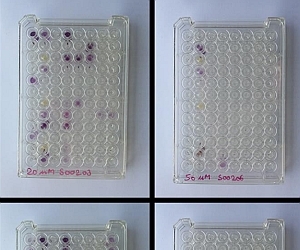Onderzoeksproject
Effect of Nanoparticles on Microbial Catabolism and Community Structure using Biolog techniques
1. To what extent do metallic NPs added to soil extractions change the activity, abundance, or community composition of microbes? 2. How do the effects of metallic NPs on soil microbes differ from the effects of the ions shedding from corresponding NPs?
- Looptijd
- 2015 - 2019
- Financiering
-
 China Scholarship Council
China Scholarship Council
- Partners
Partner

Short Abstract
Interest is growing in understanding the impact of individual nanoparticles (NPs) on ecosystems. In this PhD project, the impact of different metallic NPs on soil microbial community will be assessed using Biolog Technique. The properties, behavior, fate and toxicity of the selected NPs are also investigated.
Project description
Nanoparticles (NPs) are substances in the size range of 1-100 nanometers in at least one dimension. The increasing use of NPs and their potential accumulation in soil may threaten non-target natural environmental bacterial communities.
In this study a microcosm approach will be established to investigate the effects of well characterized silver, copper, zinc and perovskite nanoparticles on the function of the bacterial community inhabiting Dutch topsoil. In this project we look for nano- ecotoxicity using five different research steps:
1) Fate assessment of selected NPs
2) Relative contribution of NP ion to the overall toxicity of NPs
3) Kinetic profile of the average well color development (AWCD)
4) The community-level physiological profile (CLPP) of soil extractions will be assessed using substrate utilization patterns gathered via BIOLOGTM ECO plates.
5) Principal component analysis (PCA) of the BIOLOG TM ECO plate data is also used to track changes in the bacterial community in response to NPs exposure.
In this project all five research steps are involved to supply new perspective to the nano-ecotoxicity on microbial community.

